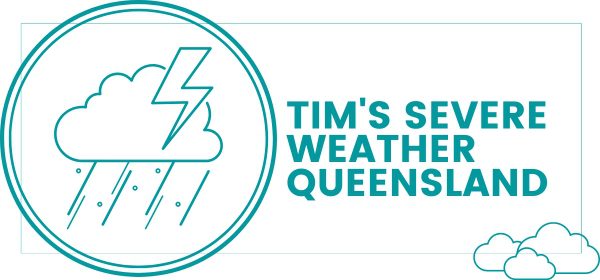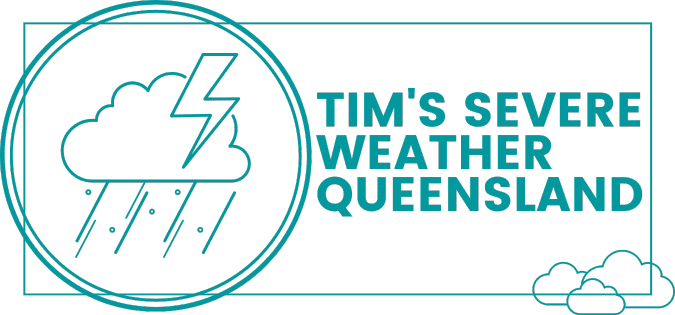Possible Cyclone & Low-Pressure System Forecast Track Maps For The Next 9 Days
See Tropical Cyclones Track Map Affecting QLD
What Is a Live & Real Time Tropical Low-Pressure System Tracking Map for Queensland?
A live and real-time tropical low-pressure system tracking map for Queensland is a digital map that shows the current position and movement of tropical low-pressure systems in Queensland, Australia. These systems can potentially develop into tropical cyclones, which are severe weather events with strong winds and heavy rainfall.
The map typically displays the location of the low-pressure system, its predicted path, and any relevant warnings or alerts issued by meteorological agencies. It allows residents, emergency services, and other stakeholders to track the progress of the system and make informed decisions about preparedness and response actions.
These maps are often available on the websites of meteorological agencies, such as the Australian Bureau of Meteorology, and may also be accessible through weather apps and other online platforms.
🌐Other Tropical Low-Pressure System Tracking Map Web Resources
- Windy.com Hurricane Tracker: Windy.com provides a comprehensive hurricane tracker that allows users to monitor and track hurricanes in real time. The website offers a user-friendly interface with a map that displays current and predicted hurricane paths, wind speeds, and other relevant information. Users can zoom in and out of the map to view specific areas and click on individual storms for more details. Windy.com also provides users with the option to overlay other weather information, such as temperature, precipitation, and air pressure, on the map for a more comprehensive view of weather conditions.
- Zoom.earth Storms: Zoom.earth offers a storm tracker that allows users to monitor and track storms, including hurricanes, typhoons, and cyclones, in real time. The website provides a global view of current storm activity, with the ability to zoom in and out to view specific regions. Users can click on individual storms to view detailed information, including the storm’s location, wind speed, and direction. Zoom.earth also offers a timeline feature that allows users to view past storm activity and compare it to current conditions.
Both websites provide valuable tools for tracking and monitoring storms, offering users the ability to stay informed and prepared during hurricane season.
10 Ways An Australian Tropical Low Forecast Track Map Can Help Avoid Severe Weather Effects On Communities.
Australian tropical low forecast track maps are vital tools for understanding the potential impact of developing tropical weather systems. These systems can evolve into more severe weather phenomena such as tropical cyclones, which can have devastating effects on communities. Here are 10 ways in which these forecast track maps can help avoid severe weather effects on communities:
- Early Warning: These maps provide an early warning by tracking low-pressure systems that have the potential to turn into tropical cyclones. Early warnings allow for more preparation time.
- Preparation Time: By tracking the potential path of a tropical low, communities and emergency services can prepare in advance for severe weather conditions, securing property, and ensuring the safety of residents.
- Evacuation Plans: With accurate tracking, authorities can determine which areas are most at risk and can organize timely evacuations, preventing injuries and loss of life.
- Resource Allocation: Forecast track maps help government and disaster response teams to allocate resources more effectively. This includes positioning emergency supplies, medical teams, and relief workers in areas forecasted to be affected.
- Public Awareness: Publishing these maps in the media raises public awareness about the potential threat. Informed citizens can take proactive measures to protect themselves and their properties.
- Farming and Agriculture: Farmers can take necessary precautions to protect their crops and livestock, mitigating economic losses by making informed decisions based on the forecasted track of the weather system.
- Infrastructure Protection: Knowing the potential path and intensity of a tropical low enables utility companies and municipalities to protect critical infrastructure, such as power lines, water treatment facilities, and roads.
- Insurance and Financial Planning: Businesses and homeowners can prepare for the financial impact, including contacting insurers if necessary. This preparation can help in the quicker recovery of affected communities.
- Navigation and Maritime Safety: The maps are crucial for maritime interests, including commercial shipping and recreational boating. They can avoid dangerous areas, significantly reducing the risk of maritime accidents.
- Research and Development: Over time, the data collected from these maps aid in the research and development of more accurate forecasting models. This continuous improvement helps in better predicting and mitigating the effects of future weather systems on communities.
Australian tropical low forecast track maps are instrumental in minimizing the adverse effects of severe weather on communities. By providing critical information for preparation, response, and recovery efforts, they play a pivotal role in safeguarding lives, livelihoods, and property.
How Can I Prepare For A Tropical Depression Impact On Queensland
Preparing for a tropical depression in Queensland involves a series of proactive steps to ensure safety and minimize damage. While tropical depressions are not as intense as tropical cyclones, they can still lead to significant weather-related hazards such as heavy rainfall, flooding, and strong winds. Here is a guide on how to prepare for a tropical depression impact:
Before the Tropical Depression
- Stay Informed: Keep track of updates from the Bureau of Meteorology (BOM) through their website, radio, TV broadcasts, or social media. Knowing the system’s progress and forecasts can help you make informed decisions.
- Emergency Kit: Prepare an emergency kit that includes essential items such as enough food and water for at least 72 hours, a first-aid kit, flashlights, extra batteries, important documents, medications, and other necessities.
- Home Maintenance: Check your home for any necessary repairs. Secure loose tiles, clear gutters and downpipes, trim branches near your house to reduce the risk of them falling onto your property, and secure any loose objects in your yard that could become projectiles in strong winds.
- Flood Preparations: If you live in a flood-prone area, consider installing sandbags or flood barriers. Know the safest route to higher ground and plan for what you’ll do if you need to evacuate.
- Evacuation Plan: Familiarize yourself with local evacuation routes and have a plan in place for where you can go if an evacuation order is issued. Make sure all family members know the plan.
- Insurance Check: Review your home and contents insurance to make sure your coverage is adequate and includes flood damage if you’re in a risk area.
- Back-Up Power: Consider purchasing a generator or alternative light sources in case of power outages. Remember to never use a generator indoors due to the risk of carbon monoxide poisoning.
- Communicate: Make sure your family members know how to stay in touch during the storm in case you’re not together. Agree on a meeting place or a relative’s home where you can regroup.
During the Tropical Depression
- Stay Indoors: During heavy rain and strong winds, it’s safest to stay indoors away from windows and glass doors. Create a safe room within your home if necessary.
- Monitor Updates: Keep listening to the local radio or check updates online for the latest advice and instructions from authorities.
- Power Safety: Be prepared for power outages. Keep your phone and other devices charged. If you use candles, never leave them unattended.
After the Tropical Depression
- Assess Damage: Once it’s safe, assess your property for damage. Take photos for insurance purposes and conduct temporary repairs to prevent further damage where safe to do so.
- Check on Neighbors: If it’s safe, check on neighbours, especially those who are elderly or might need assistance.
- Avoid Floodwaters: Stay away from floodwaters, as they may be contaminated or deeper than expected. Be cautious about potential wildlife hazards such as snakes.
- Wait for the All-Clear: If you evacuated, wait for authorities to give the all-clear before returning home.
Remember, the key to effective preparation is to start early. A tropical depression can quickly escalate into a more severe tropical cyclone, so taking early and thorough preparedness steps is crucial for safety.
What Possible Impacts Can A Tropical Low-Pressure System Bring In Queensland?
Tropical low-pressure systems, even without developing into full-blown cyclones, can have significant impacts on Queensland. These impacts can vary in intensity depending on the system’s strength, speed, size, and path, as well as the local geography and community preparedness levels. Here are some possible impacts of a tropical low-pressure system in Queensland:
1. Heavy Rainfall and Flooding
The most common and widespread impact of tropical lows is heavy rainfall, which can lead to flash flooding and riverine flooding across affected areas. This can inundate homes, businesses, and agricultural land, leading to damage and economic losses.
2. Strong Winds
Although not as intense as those in a tropical cyclone, the winds associated with tropical lows can still be strong enough to cause damage. This may include downing trees, causing minor damage to buildings (such as to roofs and fences), and disrupting power lines.
3. Storm Surges and Coastal Erosion
If a tropical low passes close to the coast, it can lead to storm surges and coastal erosion. This is particularly impactful for coastal communities and can lead to property damage and loss of land.
4. Landslides
In areas with steep terrain, the heavy rainfall associated with tropical lows can trigger landslides. This not only poses a risk to life but can also cut off access roads, isolating communities.
5. Damage to Infrastructure
The combination of heavy rainfall and strong winds can lead to damage to infrastructure, including roads, bridges, and utilities. This can disrupt transport, communications, and services such as power and water supply.
6. Agricultural Impact
Tropical lows can have significant impacts on agriculture, including crop damage due to flooding or wind, loss of livestock, and soil erosion. This can lead to economic losses for farmers and affect food supply chains.
7. Disruption to Marine and Wildlife
High winds and heavy rains can also affect marine environments and wildlife. Fish populations might be disrupted, and terrestrial wildlife might lose habitat or be forced into closer contact with humans, leading to increased wildlife sightings or incidents.
8. Economic Consequences
The combined impacts of damage to homes, businesses, infrastructure, and agriculture can have significant economic consequences. This includes both the cost of repairs and lost productivity.
9. Health and Safety Risks
Flooding and the aftermath of tropical lows can pose health risks, including waterborne diseases, increased populations of mosquitoes leading to diseases like Dengue fever, and physical injuries during cleanup efforts.
10. Social and Psychological Effects
The stress and trauma of experiencing a severe weather event, along with the potential for significant property loss, can have lasting social and psychological effects on those affected.
Given these potential impacts, it’s crucial for communities in Queensland to stay informed about tropical low-pressure systems and to have emergency plans and preparations in place. This not only helps to mitigate the physical impacts but can also aid in quicker recovery following an event.


